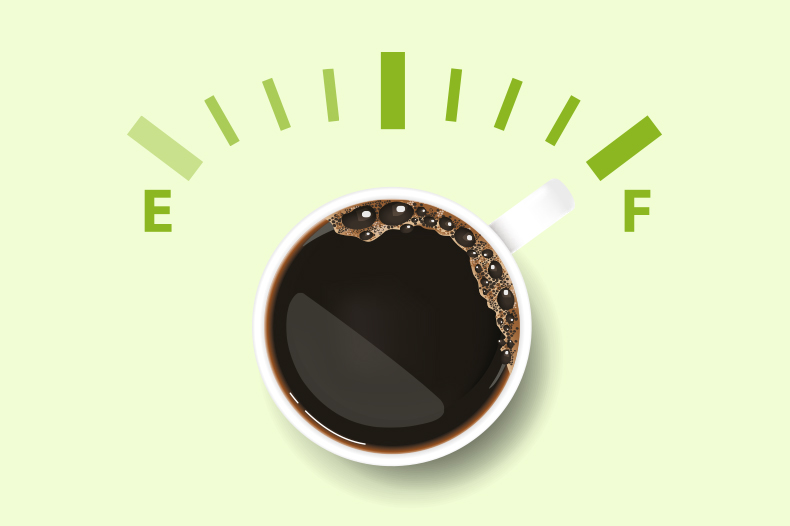It’s all about energy
A flavourful addition didn’t add up for the Court, writes Felicity Hide.

This joined case relates to the decisions of the Second Board of Appeal of the EUIPO, relating to two revocation proceedings between Frito-Lay Trading Company (Frito) and Monster Energy Co. (Monster).
The earliest application in these proceedings was filed by Monster on 3rd November 2010 for the word mark MONSTER, covering class 30, “Coffee-based beverages and coffee-based beverages containing milk”, and class 32, “non-alcoholic beverages”, namely energy drinks and energy drinks flavoured with coffee, all enhanced with vitamins, minerals, nutrients, amino acids and/or herbs.
The second application was filed on 5th November 2010 for the word mark MONSTER ENERGY in class 30 only.
On 25th April 2017, Frito filed for the revocation of these marks on the grounds that they had not been put to genuine use within a continuous period of five years.
Monster submitted evidence of use of those marks. However, the Cancellation Division (CD) revoked both contested marks for most of the goods, finding that use had been proved only in connection with class 32.
Monster subsequently filed two notices of appeal with the EUIPO under Articles 66 to 71 Regulation 2017/1001, which were dismissed by the Second Board of Appeal (BoA) on the ground that Monster had not proved use during the relevant period for anything other than energy drinks.
The drinks in question were Monster’s “X-Presso Monster Hammer” and “X-presso Monster Midnite”, and on photographs of those drinks, the wording “espresso coffee drink with milk” appeared.
The BoA therefore found it necessary to distinguish between “coffee-based beverages” in class 30, whether or not they contained milk, on the one hand, and “energy drinks” in class 32 on the other.
The BoA stated that the Encyclopaedia Britannica defined an “energy drink” as:
“Any beverage that contains high levels of stimulant ingredient, usually caffeine, as well as sugar and often supplements, such as vitamins or carnitine, and that is promoted as a product capable of enhancing mental alertness and physical performance.
Energy drinks are distinguished from sports drinks, which are used to replace water and electrolytes during or after physical activity, and from coffee and tea, which are brewed, contain fewer ingredients, and may be decaffeinated.
Energy drinks also differ from soft drinks, which either do not contain caffeine or contain relatively small amounts of caffeine…”
The “X-Presso Monster” goods contained L-carnitine, B vitamins, ginseng and taurine; ingredients which, according to the BoA, were not commonly used in “coffee-based beverages containing milk”, but which are often found in energy drinks.
The fact that the “X-Presso Monster” goods contained 1.3% coffee extract was not convincing, as Monster had not explained whether those goods were brewed or not.
Further, the view was taken that although those goods might be coffee-flavoured, they also contained a broad range of ingredients not commonly found in “coffee-based beverages” and that the label on those goods clearly indicated that they had a “high caffeine intake”.
The BoA concluded that the “X-Presso Monster” goods were, even if coffee-flavoured, essentially energy drinks.
Monster sought to annul the contested decisions to the extent that they revoked the contested marks. The EUIPO and Frito sought to dismiss the action and to order Monster to pay the costs.
Tripartite plea
Monster relied on the following plea in law in three parts:
- The BoA failed to have regard to the “principle that a product can be correctly classified, and therefore put to genuine use, in more than one class, in view of its composite nature”;
- The BoA erred when it found that use had not been proved in connection with the goods concerned because those goods shared certain characteristics with energy drinks in class 32, and gave undue weight and significance to those characteristics;
- The BoA erred in taking the manufacturing process of the goods into account for the purposes of its assessment.
In relation to the first part of the plea, the GC referred to Alpha Calcit v EUIPO – Materis Paints Italia (CALCILITE)1, which was considered by the BoA in its decision.
This sets out the principle that a finished product is defined by its function or purpose, whereas this specific situation was that of “a multi-purpose composite object”, which might be capable of being classified in a number of classes because of its various functions or intended purposes.
The GC held that the BoA had correctly found that it was necessary to refer to the general principle rather than to the specific situation relating to “multi-purpose composite objects”.
In accordance with that principle, it was held that the BoA correctly found that the real function or purpose of the “X-Presso Monster” goods was to serve as energy drinks in class 32, albeit coffee-flavoured ones including milk.
The Court further held that Monster could not usefully claim that the “X-Presso Monster” goods are “multi-purpose composite objects”, saying:
“Multi-purpose composite objects are goods which are sold as a whole, but in which each of the components has an independent and distinct market value and could be marketed without the other specific component which is sold with it.
By contrast, [Monster’s] canned beverages constitute an inseparable homogeneous product which fulfils one main function, namely that of being essentially a stimulating energy drink, in the present case one of which is flavoured with coffee.”
A coffee beverage is, unsurprisingly, characterised by the presence of coffee, whereas an energy drink has a number of ingredients, with the coffee flavour having a secondary role.
Monster’s case was not helped by its own evidence, which stressed the “energy” function of the drinks.
With regard to the second plea, Monster argued that if it were the case that its “X-Presso Monster” goods cannot fall within more than one class, the BoA had attributed undue weight and significance to the characteristics associated with energy drinks in class 32 and had taken insufficient account of the characteristics which indicate that those goods are class 30 coffee-based beverages.
The GC found the BoA to be correct in that the real function or purpose of those goods was to serve as “energy drinks, albeit coffee-flavoured variants thereof including milk”.
What’s more, the BoA had correctly pointed out that the “X-Presso Monster” goods contained ingredients commonly found in energy drinks but which weren’t normally found in coffee-based beverages.
Consequently, the second plea was also rejected.
In relation to the third plea, the GC found that the BoA had correctly carried out the global assessment of whether the use of the contested marks was genuine and had also correctly found that the function and purpose of the “X-Presso Monster” goods met the definition of an energy drink.
This meant that genuine use for the coffee-based goods had not been proven. Consequently, the GC also rejected the last plea, and the action was dismissed in its entirety.
Function and purpose
The case law says that goods are defined according to their function and purpose when it comes to assessing genuine use.
We are also told that goods may fall into more than one Nice class if they have components that each have an independent and distinct market value.
However, in this case, it appeared that the Monster drinks did contain coffee as well as other ingredients and may well have fulfilled more than one purpose. It is easy to have some sympathy with Monster’s position on this.
Monster pleaded the CALCILITE case on “multi-purpose composite objects”.
However, the Court clarified that in order to be considered as such, each component of the item must have an independent and distinct market value and be capable of being marketed without the other specific component sold with it.
No examples of this are given, which leaves us to speculate. For example, would a power tool sold with detachable battery and accessories be considered a multi-purpose product?
In Monster’s case, the Court defined the goods as “an inseparable homogeneous product which fulfils one main function”.
There may be two messages to glean from this. First, if the product is “homogeneous” and cannot be separated into parts, it is harder for it to claim more than one function.
Second, a test of the “main function” led to the coffee flavour being discounted as simply a characteristic. Although the Monster drinks may have had more than one characteristic, the test is the “main function”.
It is easy to assert a general principle of “register your mark for the goods you actually use the mark upon”.
However, it seems that the “main function” of a homogeneous product is still open to interpretation. As a result, it would seem prudent to register for all the functions of the product, in case a court should disagree as to which one is the “main” one.
Key points
- Goods are defined according to their function and purpose when it comes to assessing genuine use
- It may be possible for goods to fall into more than one class if they have components which each have an independent and distinct market value
- In Monster’s case, the defined purpose of the goods led to classification solely as an energy drink, with its flavour being considered a characteristic that did not define its function.





